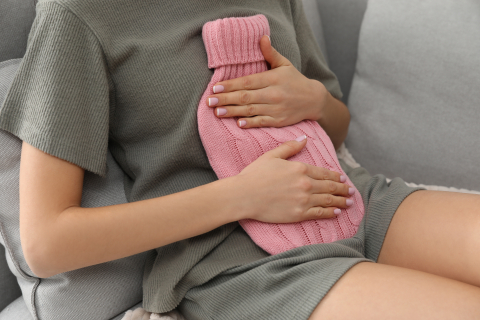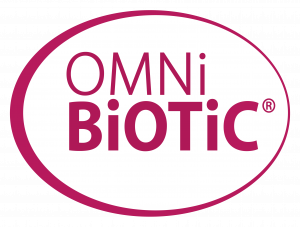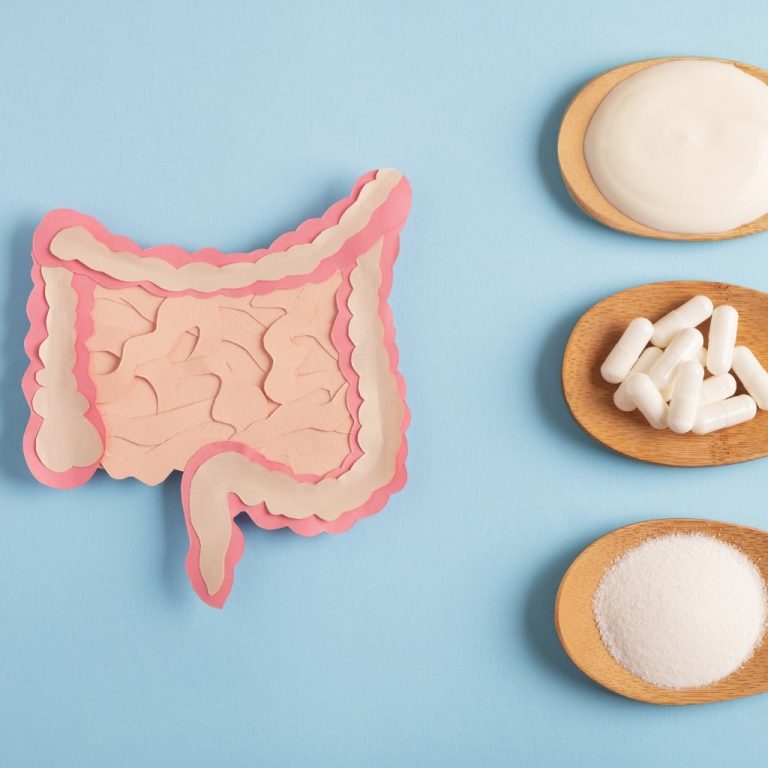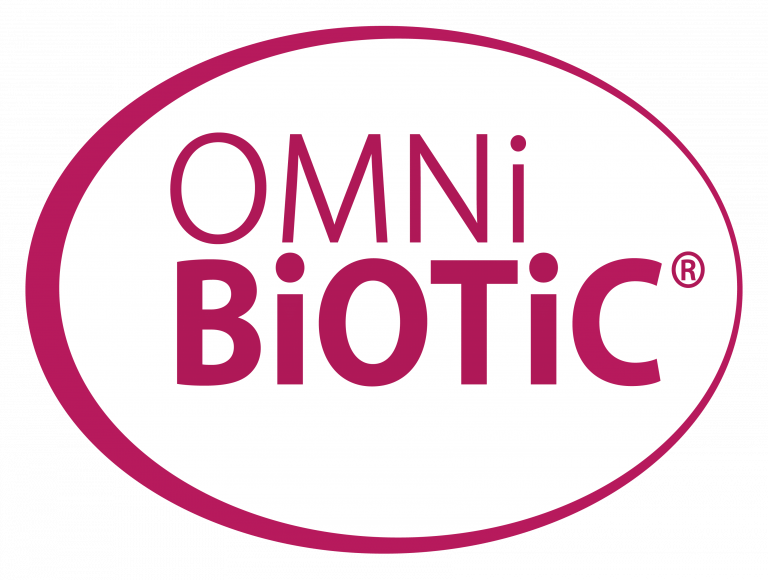What is endometriosis?
Although it is rather unknown in society, endometriosis is one of the most common gynaecological diseases – around 10 % of women of childbearing age are affected. In endometriosis, tissue similar to the lining of the uterus (= endometrium) appears in places outside the uterine cavity. The lower abdomen and pelvic area, in particular the ovaries and fallopian tubes, and also the intestines are frequently affected. In rare cases, these cells even migrate to distant organs such as the lungs. Like the lining of the uterus, endometriosis lesions also grow and bleed during the menstrual cycle, triggering localised inflammatory reactions. As a result, those affected suffer from severe cramp-like pain, especially during their period. Endometriosis is therefore a disease that is controlled by hormones, especially the female sex hormone oestrogen.

Symptoms of Endometriosis
Due to the different localisations and manifestations, the symptoms are very heterogeneous. The main symptom is severe menstrual pain. However, those affected also frequently complain of abdominal pain throughout the month or pain during sex, urination or defecation. Other problems include cyclical gastrointestinal complaints such as diarrhoea, constipation and bloating. In particular, a severely bloated abdomen, often referred to as an “endobelly“, is often a major problem for those affected. The lower abdomen can swell for a few hours, but also for days or even weeks, which is associated with pain and pressure in the abdominal and back area. In some cases, organ damage can also occur due to the ingrowth of endometriosis lesions. In addition, many affected women have difficulties getting pregnant, which can also cause a great deal of suffering.
Find out more about the symptoms of endometriosis on the NHS Website here
How is endometriosis treated?
Endometriosis is not yet completely curable. Nevertheless, there are various treatment options to alleviate the pain and delay the progression of the disease. The treatment depends on the extent of the symptoms and the localisation of the endometriosis lesions. Hormonal drug therapy aims to suppress oestrogen production in order to stop the growth of endometriosis lesions. The pill or other hormone preparations are often prescribed for this purpose. Proven painkillers with an anti-inflammatory effect also help to alleviate the pain. However, their use should always be agreed with the doctor treating you. In severe cases or in the case of fertility problems, surgery is often performed to remove the foci. The procedure is usually performed as part of a laparoscopy. Although the chances of success are best here, surgery does not lead to long-term improvement in all patients, as new endometriosis centres can form after some time. A combined treatment is therefore often recommended.
There are also various ways to support conventional medical treatments. For example, relaxation training or exercising as well as tried and tested home remedies such as hot water bottles can provide noticeable pain relief. Diet also plays an important role in endometriosis. Many sufferers not only suffer from severe menstrual pain, but also from gastrointestinal complaints that severely affect their daily lives. An antioxidant and anti-inflammatory diet can reduce both intestinal discomfort and the intensity of pain.

“Endometriosis is my greatest weakness, but also my greatest strength. It has shown me what is important in life and that you have to expect to wake up in severe pain every day. For many years I struggled with severe digestive problems, I had diarrhoea every day. By taking high-quality probiotics, the symptoms got better from month to month. On the other hand, the diagnosis also made me strong, as it taught me to fight. To fight for myself and all the other women who have to live with this disease.”
Anne-Catrin Roth, pharmaceutical representative at Institut AllergoSan
How does the gut microbiome influence endometriosis?
Recent studies have shown that both the vaginal and intestinal microbiome can be altered in endometriosis patients. The microbiome can be important on many levels. For example, an imbalanced vaginal flora can lead to ascending infections and inflammation. Intestinal bacteria also play a decisive role in inflammatory diseases. At the same time, the intestinal flora regulates the availability of circulating oestrogen. As endometriosis is an oestrogen-driven, chronic inflammatory disease, a dysbiosis in the gut, i.e. a negatively altered gut flora, could play a decisive role in its development and progression.
How to strengthen the microbiome with endometriosis
This makes it all the more important to consider your gut health and the role it plays in overall health and well-being. A healthy and balanced diet can promote the growth of good intestinal bacteria. Many report positive experiences with the use of specially developed multispecies probiotics. Selected combinations of anti-inflammatory bacterial strains can strengthen the intestinal barrier and counteract inflammatory processes. It is also recommended to strengthen the vaginal flora with selected multistrain probiotics, as a vaginal flora dominated by lactobacilli can protect against infections and inflammatory reactions.
Adenomyosis vs Endometriosis
What is the difference between adenomyosis and endometriosis?
In endometriosis, the cells that typically line the uterus grow outside of it, sometimes affecting nearby organs like the ovaries, fallopian tubes, and bladder, posing challenges for conception. On the other hand, adenomyosis occurs when similar cells embed deep within the uterine muscular wall, thickening it but remaining within the confines of the uterus itself. Despite their differences, both conditions bring about symptoms such as abdominal pain, discomfort during intercourse, heavy menstrual bleeding, and pain during urination or bowel movements. Endometriosis further exacerbates with irritation and swelling of adjacent tissues, potentially leading to scarring. Adenomyosis, however, results in the enlargement of the uterus, exerting pressure on the bladder and rectum and altering uterine muscle contractions, often causing intense and prolonged menstrual periods. Additionally, both conditions may lead to anemia due to excessive menstrual bleeding, necessitating the use of iron supplements to replenish depleted iron levels.
Find out more about adenomyosis on the NHS Website here



























